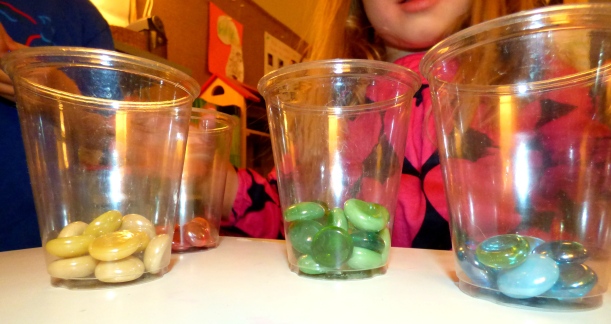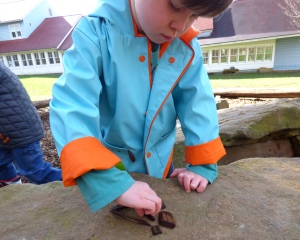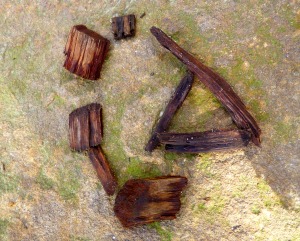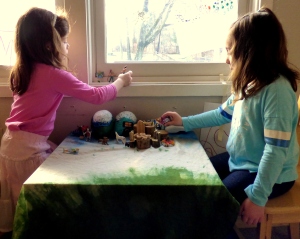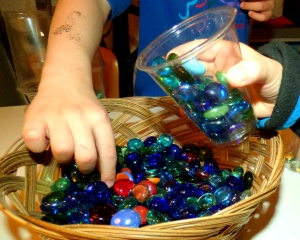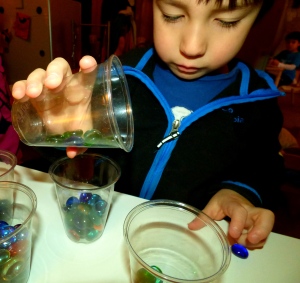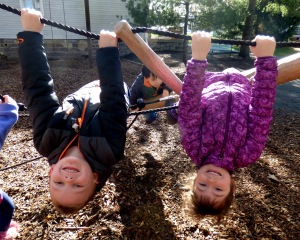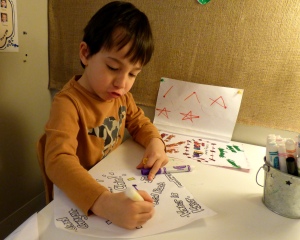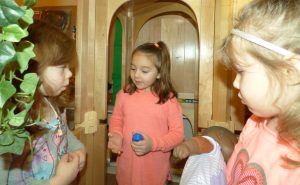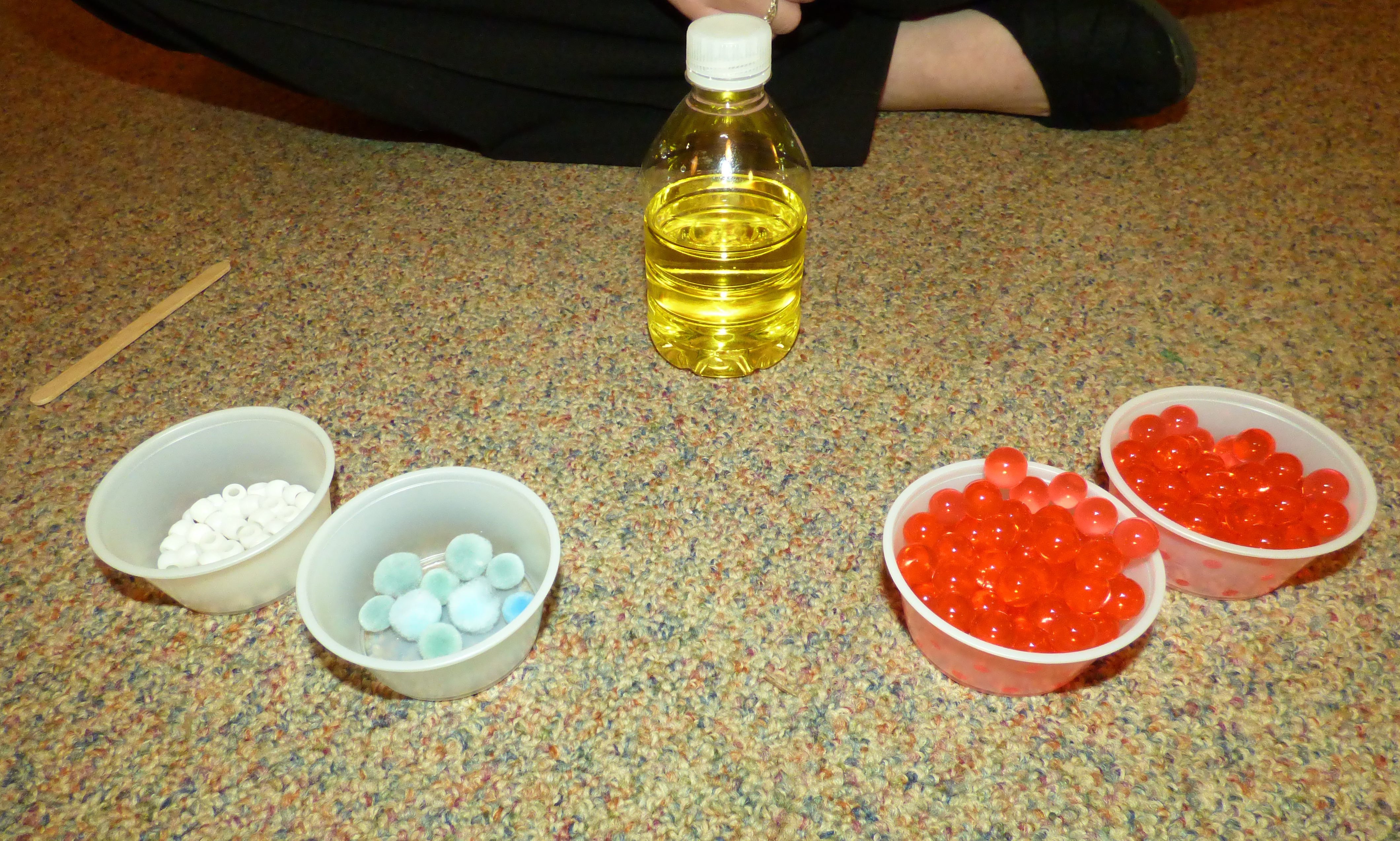Our class is exactly one week away from filming our movie, so I thought you might want to see how our writing process has evolved this year. Every year’s writing style is a little different, depending on the group of students and their prior knowledge about storytelling. We spend a great deal of time talking about story elements like the beginning, middle, and end and the problem and solution in stories. Then beginning in January, the students start creating characters and working together to tell whatever story they come up with that day.
Below, I have included the very first draft that our students wrote this year. You’ll notice that it is mostly story telling and very little spoken lines. As the students become more comfortable in the writing process they begin to tell the story through the spoken language, rather than having the narrator explain everything. You’ll also notice that the students chose all original characters. We always start the writing process by discussing what copyright means and how we can’t steal ideas from other people. It also makes for some pretty interesting characters and ultimately fun storytelling.
You might also notice that some students chose a character but then don’t actually do anything in the play. We allow the students to take on as much of a role in the story as they want. Some students are not as comfortable having speaking parts as others and some just forget to include themselves in the story line. The next writing session always starts by acting out what they had written the last time. This gives the students and opportunity to see what needs to be changed or added. It also is a great way for those students to see whether they are a large part in the play or not at all. The students can then decide to make little changes to the current story or write a whole new story line. This class has stuck with the same story throughout all of our writing sessions, which has never happened up until this point! There is a first time for everything!
Enjoy!
January 3, 2017
S.A. – Mom Princess Heart
E.C. – Mom Princess Flower
C.P.– Princess Snow Angel
G.K. – a baby
Z.G. – a talking hamburger
G.S. – a skeleton with fire hat
C.S. – Princess Snowflake
N.T. – a fairy
I.M. – Santa
V.J. – a whale
W.W. – a talking garbage can
F.R. – Princess Pom Pom
Once upon a time there was a little home out in the west and it was snowing. In the snow there was a castle where some princesses live. Santa shows up at the castle and he goes down their chimney and he puts some presents under the tree. Then he goes back up the chimney and leaves. Outside the castle there was a moat and in that moat lived a whale. He looks up chimney and he sees Santa coming out. And he says, “Just gimme a present.” And Santa said, “No.” and then flies away.
Inside, the talking garbage can is very happy because Santa gave him some garbage to eat. Princess Snowflake comes out of her room and says, “Whats going on?” and she checks to see if the sun is up and if it’s time for breakfast. The talking hamburger says that the food is ready! Princess Snowflake looks outside and it’s still night time and there were a big snow storm happening outside. There was lighting. The fairy wakes up too and tries to use her magic to make the storm stop and it works!
Then all the princesses wake up and come downstairs for breakfast. They look under the tree and see some presents. They open their presents. Then they go outside and play for a little bit but they get cold so they come inside and take a bath. But they forgot to close and the door and Mom Princess Heart notices a snake has come inside. The snake bites her and she gets hurt. The skeleton comes with fire hose and he blows the snake away with the water.
Princess Pom Pom and the baby take their mom to the doctor so she can get a shot and band aid.
And they lived happily ever after!
The End!

